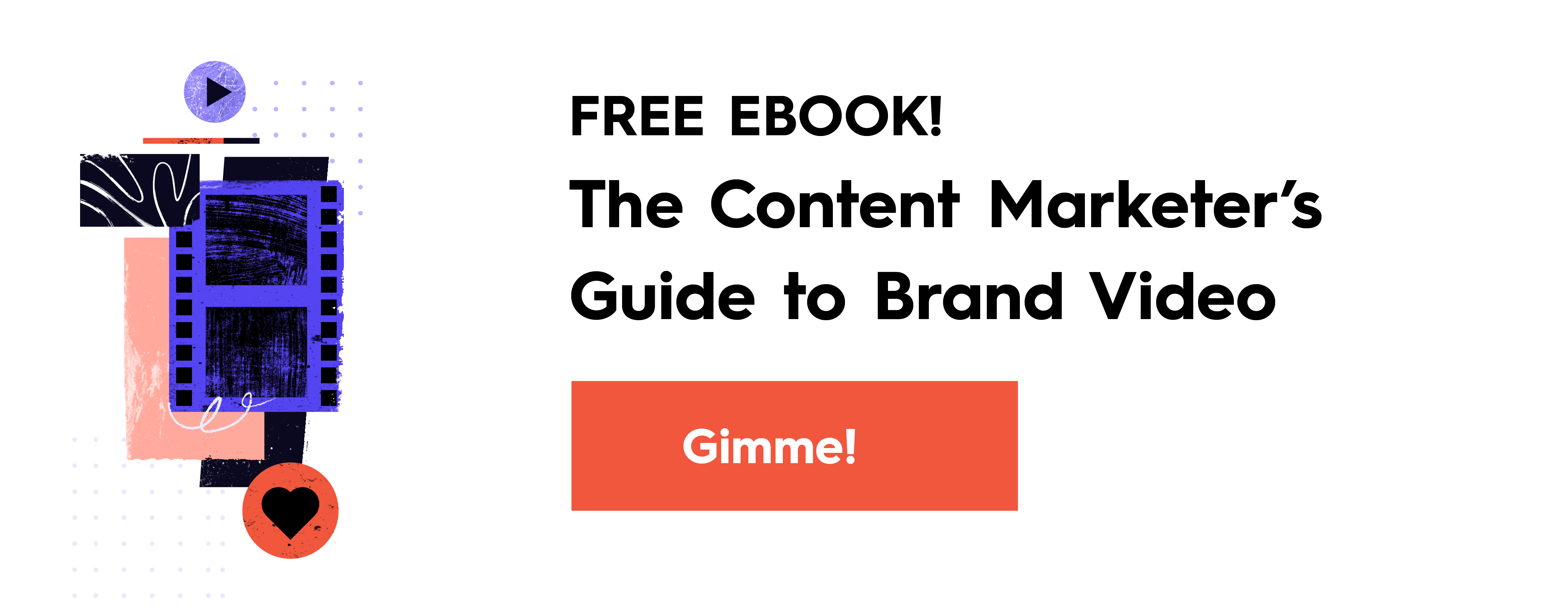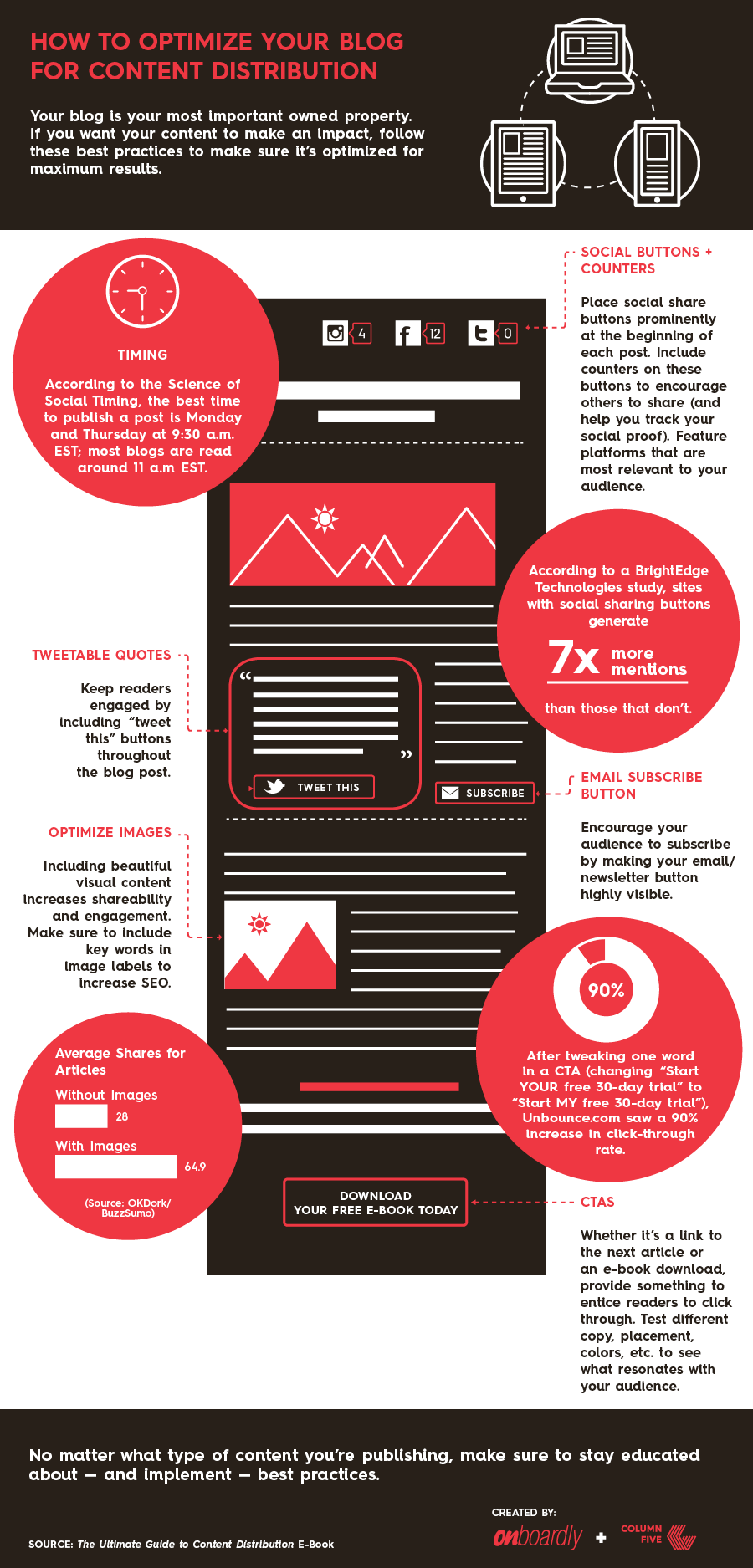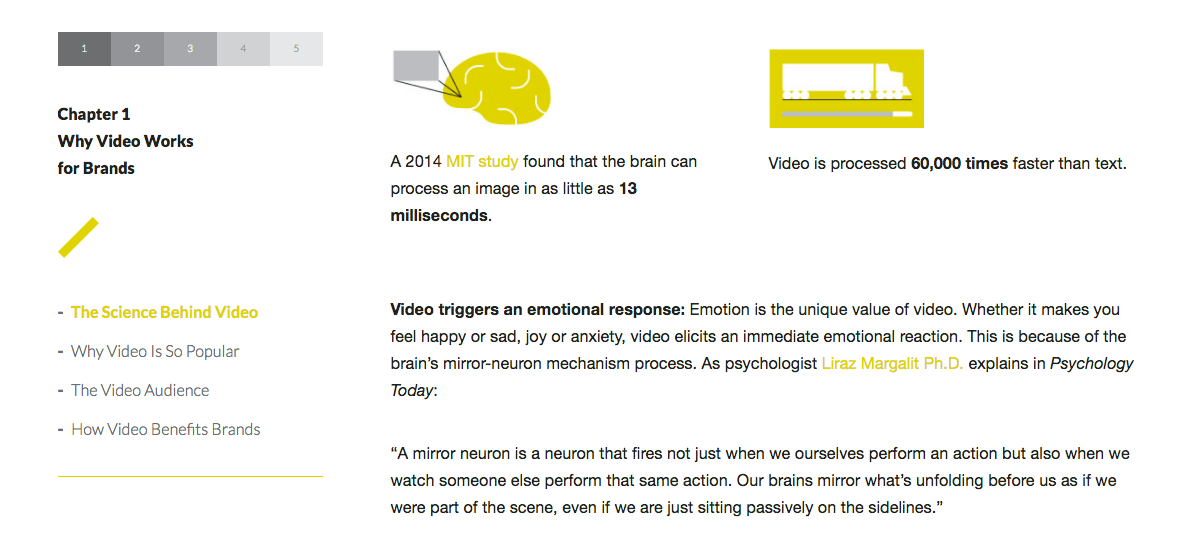According to the Content Marketing Institute’s 2021 B2B Content Marketing Trends report, 54% of marketers create ebooks. This means that almost half of marketers are missing don’t use ebooks in their content strategy—and don’t reap the benefits of them. Ebooks are absolutely one of the best high-quality, high-value tools for lead generation, which is why they should be included in your content marketing mix. (We know this firsthand, as some of our early ebooks are still the most popular content on our website.) But there’s a difference between a marketing ebook and a successful marketing ebook.
If your marketing ebook is full of fluff, off-topic, or poorly designed, you won’t hold the attention of the people you’re trying to reach. And you certainly won’t entice them to explore your other content, so it’s crucial to create the most content-rich, eye-catching, attention-grabbing ebook you can—every time.

How to Write a Great Marketing Ebook
From ideation to distribution, there are a lot of things you can do to make your ebook successful and a few things that will sabotage it, which we’ve learned the hard way. We don’t want you to fall victim to some of our mistakes, so we’re sharing our best tips and tricks to create an awesome marketing ebook, from writing, to design, to distribution.
Whether you’re just starting out or you have a few ebooks under your belt, these simple tips can help you save time, work more efficiently, and create a piece of content that helps you achieve your goals.
Before you start writing, remember that a successful ebook starts with a good idea. Here’s how to host a successful brainstorm to kick things off.
1) Find a topic people care about.
The number one mistake in all content marketing is producing content that isn’t relevant to the people you’re trying to reach. Whether it’s too broad, too niche, too self-serving, or too boring, you need to choose a topic that provides actual value in some way.
For ebooks, which tend to be educational (as opposed to entertaining or inspirational), focus on providing insight into an area that helps people solve a problem, expand their knowledge, or learn how to do something.
Tip: To make sure your idea will work, use marketing personas to vet them. Marketing personas detail exactly who your customers are, the problems they face, what they care about, etc. You may already know what topic you want to write about, but personas can help you refine your angle. If you don’t already have personas, follow our step-by-step guide to create them in less than an hour.
Example: For our most recent ebook, The Content Marketer’s Guide to Brand Video, we created a comprehensive guide about working with brand video, tailored for a specific group of people.

2) Identify your narrative.
An ebook is a story, after all, so it should follow a narrative. Once you know your angle, take time to outline what that story is, what will anchor it, and how to best communicate it. Also think about how you might incorporate sidebars, callouts, tips, quotes, or examples to support your narrative.
A useful way to craft an outline is to consider the types of questions your reader will have (think who, what, when, where, why, how, etc.). Remember, too, that you want your narrative to guide them to a specific conclusion, takeaway, or next step.
For example, for The Content Marketer’s Guide to Brand Video, we created an A-Z guide that helped answered every question a content marketer might have, from why video works for brands, to what makes a good brand video, to how to work with a crew on set.
(Note: Using data to inform your story can be especially powerful. Try this 5-step process to uncover the interesting stories in your data.)
Tip: Break your outline into chapters and subchapters. This will help you ensure you have a logical flow.
3) Support your story with credible sources.
Marketing ebooks are a great opportunity to demonstrate your brand’s thought-leadership and experience. Of course, including strong data, expert insights, and research also helps bolster credibility. Just follow these tips to make sure you cite your sources appropriately.
Note, too, that you can reduce your researching time by combing through your existing content. If you tend to cover the same themes in your content, you probably already have valuable information or insights to incorporate. (Not sure where to look? Here are 8 types of content you already have that you can incorporate into an ebook.)
Tip: Adding expert quotes is a simple way to enhance your content—and expand your reach. If you let the expert know when you launch your ebook, they may blog about it or retweet it for their own exposure.
Example: We used an expert quote from Psychology Today to explain the science behind why video stimulates humans.
4) Follow copywriting best practices.
Again, you are creating your ebook for a specific group of people, so it should be tailored for them. That means speaking to them at their level, crafting a clear story, and avoiding unnecessary jargon and buzzwords. Pay special attention to your:
- Brand voice
- Tone
- Language
For more ways to improve your copywriting, try these 7 writing exercises and use these 100+ copywriting tips, tools, and resources.
Tip: Always make sure your copy is proofed by an editor before it goes to design.
5) Use a keyword-specific title.
An ebook title is not the place for a fun pun. It was novel in the early days of content marketing, but now people are suffering from content shock. People go to ebooks to get the information they need, quickly. Don’t waste their time making them guess the subject.
More importantly, you want any and all content you make to be optimized for SEO. Marketing ebooks can do wonders for your search rankings, so it’s important to consider what specific keyword you use in your title, blog posts, and landing pages.
Tip: Write 15 variations of your title and circulate to your team to choose the strongest.
6) Get copy approval.
We cannot stress this enough. With the exception of tiny tweaks or grammatical mistakes, your copy shouldn’t change much once it goes to design. Get sign-off from all relevant stakeholders before it goes to design. Otherwise, you’ll waste time, money, and energy in design edits down the road.
Tip: Distribute copy to everyone who needs approval, and assign a point person to consolidate all feedback so that you can work through edit rounds more efficiently.
How to Design a Marketing Ebook
A good designer uses design principles to enhance the content, maximize comprehension, and keep the reader engaged throughout. Here’s how to do that—and avoid a few pitfalls along the way.
7) Know your specs.
It seems obvious, but confirm your specs up front. Whether it’s static or interactive, meant for web or print, make sure you know your ebook dimensions, resolution, etc. before you do anything. (Have we designed something for digital that we later found out needed to be hi-res for print? Yes. We don’t want to talk about it.)
8) Choose a theme carefully.
A theme is a great way to craft a cohesive design and support your ebook story. But don’t get carried away. Your design should 1) always adhere to your brand style guide and 2) match the subject. That means making sure it’s appropriate—no goofy illustrations for an ebook about life-saving medical devices and no baseball diamond theme for a guide to choosing the right lipstick color (not that we’re calling anyone out specifically).
9) Draft wireframes.
It’s tempting to dive into design to save time, but wireframing will always save you time in the long run—especially if you need approval from a group of people. It can be hell to make late-stage design changes—and absolutely maddening if you’re creating an interactive.
(Interactive design is a whole other beast. Learn more about the keys to a great interactive.)
10) Design for story.
When applied properly, design principles help increase comprehension and enhance your story. If you can’t justify how an element does these things, you don’t need it. Follow best practices, and be economical with:
- Colors
- Logo use
- Fonts and typography
- Hierarchy
- Photography
- Illustration
- Iconography
- Data visualization
- Interactive elements
Tip: Avoid these 30 design mistakes that will sabotage any ebook. And for a little visual inspiration, take a look at these 75 examples of great ebook design.
11) Nail your data visualization.
Data design requires a bit more attention than simply throwing data into a chart. You are designing not just for aesthetics but for comprehension. (Good data visualization actually makes content easier to synthesize and recall.)
Tip: Learn how to correctly design the most common charts and graphs, and follow these 25 tips to improve the efficacy of your data visualizations.
Example: In The Content Marketer’s Guide to Brand Video, we used a variety of data visualizations, properly sourced and linked to the original data.
12) Create design templates.
One of the smartest ways to save production time and increase your turnaround is to semi-automate your design process. Creating templates is a great way to do this. Simply craft a set of mix-and-match elements, including imagery, headers, body copy, data visualizations, callouts, etc. This will make it easier to design any ebook in the future (even for non-designers).
Tip: Follow this 4-step guide to make customizable ebook design templates.
How to Distribute Your Marketing Ebook
Distribution should never be an afterthought—your owned, earned, and paid strategies should be outlined from the get-go. For a basic overview of distribution, download The Ultimate Guide to Content Distribution. But follow these tips to make your ebooks as popular as possible.
13) Know your metrics.
Before you start distributing your ebook, you need a way to measure your success. What stage of the buyer’s journey are you focusing on? Awareness? Consideration? What will help you achieve that? Impressions? Downloads? Traffic? Publication pickup? These should be documented.
Tip: Find out how to use metrics to make your content strategy more effective.
14) Prep assets.
Before you launch the ebook, ask designers to provide any assets you might need for social media, landing pages, blog headers, media teasers, etc. Make sure everything is sized appropriately, high-res, and easily accessible. (There’s nothing worse than making a journalist wait a few hours for your team to resize a simple graphic.)
Tip: Don’t know your social image dimensions? Here’s a handy cheat cheet:
- Facebook:
- Profile, Page, and Group: 820px x 462px
- Page Video: 820px x 465px
- Event: 1920px x 1080px
- LinkedIn:
- Profile: 1584px x 396px
- Company Page: 1536px x 768px
- Google+:
- Profile and Page: 1600px x 900px
- Collection and Community: 368px x 207px
- YouTube: 2560px x 1440px
- Twitter: 1500px x 500px
- Tumblr: 1600px x 900px
15) Optimize your blog.
As we previously mentioned, ebooks are awesome for SEO, yet we see too many brands that aren’t prepared to capitalize on it. In addition to your ebook title, make sure your owned properties are SEO optimized, that everything is working (e.g., social buttons!), and that content is properly uploaded.
Tip: Use this handy infographic to optimize your blog for SEO.

16) Partner with publications.
Earned media is one of the best ways to increase your reach, whether it’s through publications or social influencers. There are many ways to get placement, but one of the most effective ways is through publication-tailored content. That means your content, whether it’s a blog post, infographic, or entire ebook, is tailored for a particular publication’s audience.
Publications appreciate the free content, and it gets you pretty much guaranteed placement. It’s a win-win.
Tip: Here’s how you can use a publication-tailored strategy to get more eyes on your ebook.
17) Use a divisible content strategy.
Different platforms require different types of promotion, and you can create content specifically tailored for each—just by repurposing the content in your ebook. (We call this a divisible content strategy.) Spin your ebook into microcontent for social promo, an infographic for publication placement, or a guest blog post.

Divisible content is an efficient and economical approach to promote your ebook, expand its lifespan, and reach different groups of people.
Tip: Try this step-by-step guide to break your marekting ebook up into divisibles. And check out these 9 easy ways to turn your old ebook design into fresh content to make the most of your archive.
Work Smarter, Not Harder
We’re always on the lookout for the best tips and strategies to create more successful ebooks (ideally with less work). For a few more hacks, bookmark this roundup of 101 tools and resources for creating great ebooks, and let us know if you’ve found anything particularly helpful.
Of course, if you’re too busy to make your next marketing ebook, give us a holler and we can help you out.





